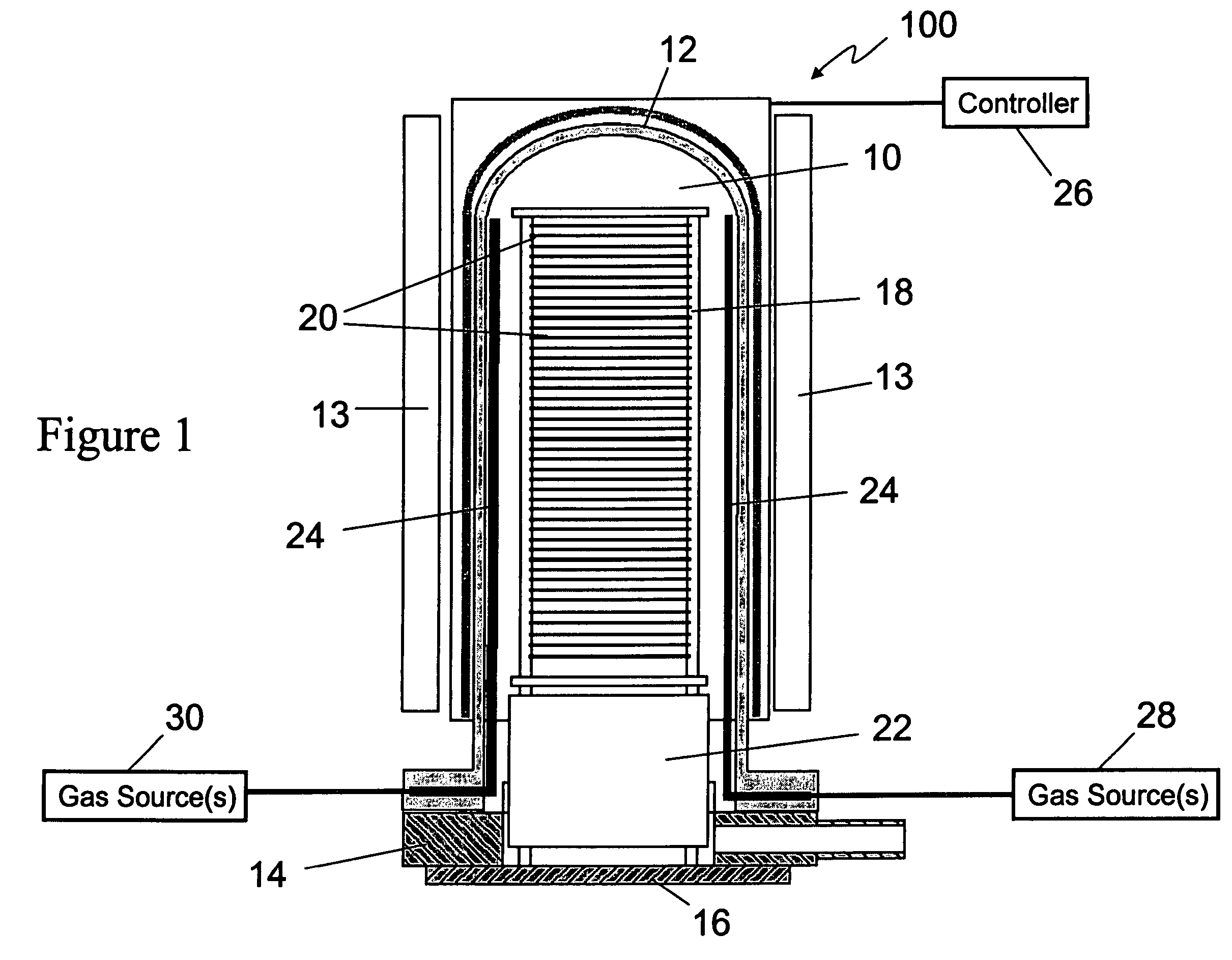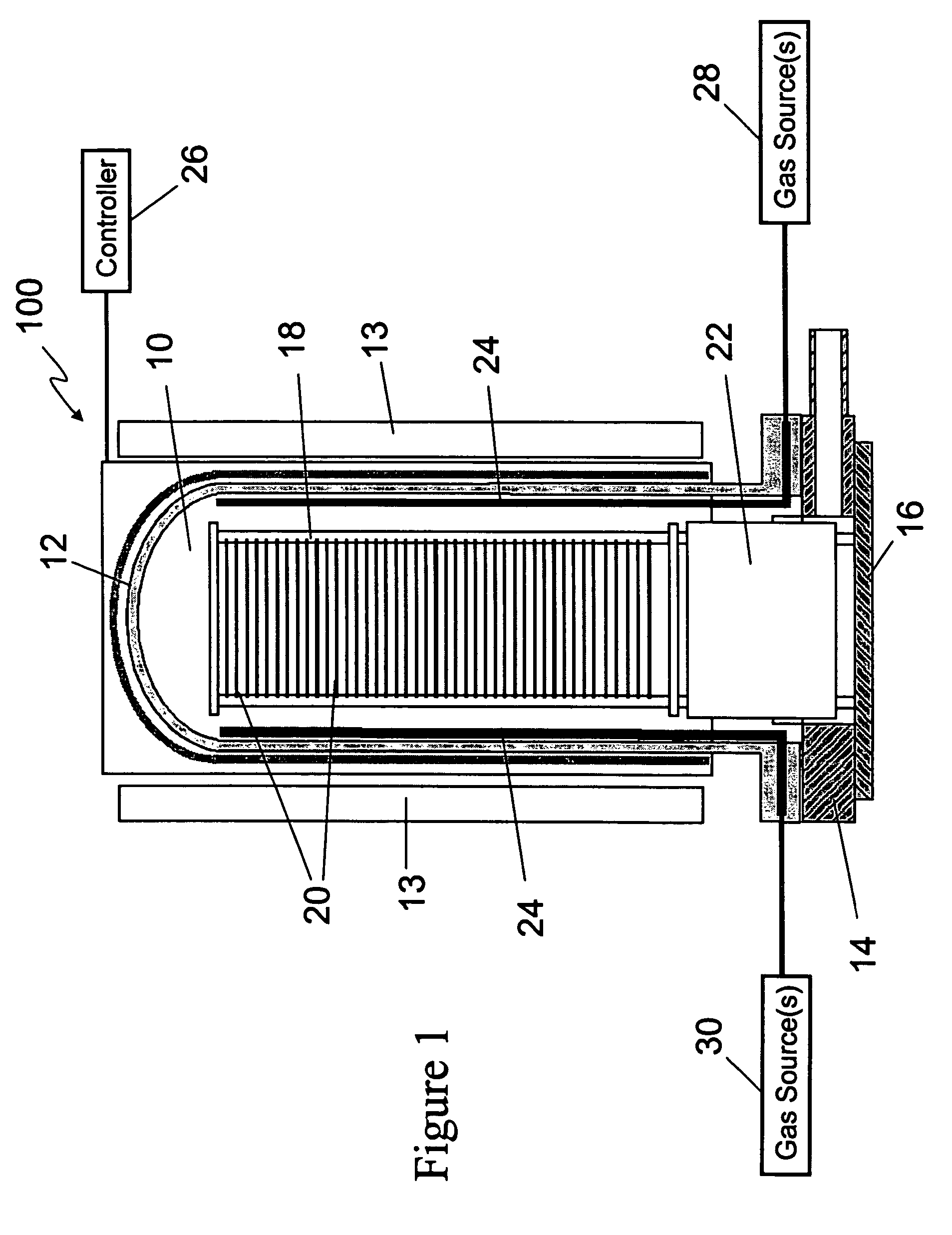Parts for deposition reactors
a technology of deposition reactor and parts, which is applied in the direction of chemical vapor deposition coating, coating, electrical equipment, etc., can solve the problems of particulate matter contamination, adverse effects, and degrading the purity and uniformity of deposited films
- Summary
- Abstract
- Description
- Claims
- Application Information
AI Technical Summary
Benefits of technology
Problems solved by technology
Method used
Image
Examples
Embodiment Construction
[0015]It has been found that excessively high levels of particle generation can occur during the deposition of film materials, especially some modern, newly-used film materials. These high levels of particle generation have been found to be caused by mismatches in the coefficients of thermal expansion (CTE's) between reactor parts and films that are deposited on the reactor parts. For example, when a deposited film expands at a different rate than an underlying reactor part, the films can crack and encourage the flaking of deposited material off of the reactor part. This cracking and flaking increases the particle count in a process chamber and can cause the deposited films to become contaminated with the flaked off material. The cracking and flaking has been found to be exacerbated in newer films, especially those more recently found to be suitable for formation by chemical vapor deposition in hot-wall reactors, because differences in CTE's between reactor parts and the deposited f...
PUM
| Property | Measurement | Unit |
|---|---|---|
| temperature | aaaaa | aaaaa |
| temperatures | aaaaa | aaaaa |
| temperatures | aaaaa | aaaaa |
Abstract
Description
Claims
Application Information
 Login to View More
Login to View More - R&D
- Intellectual Property
- Life Sciences
- Materials
- Tech Scout
- Unparalleled Data Quality
- Higher Quality Content
- 60% Fewer Hallucinations
Browse by: Latest US Patents, China's latest patents, Technical Efficacy Thesaurus, Application Domain, Technology Topic, Popular Technical Reports.
© 2025 PatSnap. All rights reserved.Legal|Privacy policy|Modern Slavery Act Transparency Statement|Sitemap|About US| Contact US: help@patsnap.com


